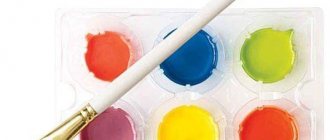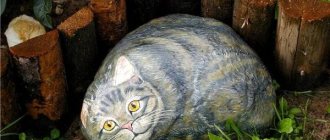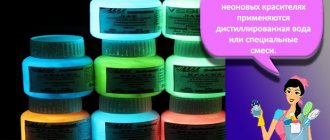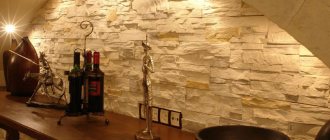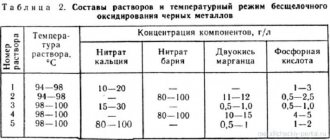If you are planning to prepare some culinary masterpiece, bake a cake with multi-colored cream, paint eggs for Easter, then you will need food coloring, but if you do not want to buy “chemicals” of dubious composition in the store, then I will now tell you how to make natural food coloring DIY dyes at home! And so, if you have already chosen a color, then with these simple recipes for natural dyes you will need several natural ingredients and a little time.
Today I will publish several recipes for different dyes for cream, for glaze, for food mastic, for dough, for jelly, for other confectionery products and even for painting Easter eggs. At the same time, having a recipe for preparing food dyes of certain colors at home, you can achieve new colors with your own hands by mixing the basic colors with each other (red, blue, green, etc.).
The basic principle of making natural food colors for confectionery is to use the juice of fruits and vegetables, which provide color but do not add flavor.
How to make red food coloring
I'll start with the brightest - red natural food coloring, which you can easily make with your own hands at home using ordinary beets or various berries, which can be bought in any vegetable department of chain supermarkets.
Here are a couple of recipes that will allow you to make your own red food coloring from beets, which is completely natural:
- Method: wash and peel one large beet, and then grate the beets on a grater (you can even use a large section). Pour the grated beets into a saucepan and fill with water so that its level is just above the pulp, then add a few drops of 9% vinegar (but not more than half a teaspoon) to the saucepan. Place the pan on the stove, bring to a boil and keep boiling for no longer than 3 minutes. After the beet pulp has been boiled, strain the broth through a strainer to separate the pulp. Now your natural red food coloring is ready.
- Method: It does not require cooking, but you will need a blender or a good mixer: wash one large beet and peel it, put it in a blender and add 1/2 cup of clean water. Using a blender, mix everything until smooth and then strain this fresh beetroot through a sieve - the resulting juice will be a natural red dye.
Another natural red and pink dye can be made from the juice of raspberries, cherries and pomegranates, for which you just need to squeeze the berries.
Bleaches
Bleaching agents (bleaches) prevent and remove unwanted coloration of a product (such as flour) by chemically reacting with its components.
By chemical nature they are oxidizing or reducing agents. The action of oxidizing agents (peroxides, hypochlorites) is based on the release of active oxygen or chlorine, which interact with unwanted coloring substances in the product, turning them into uncolored compounds. The effect of reducing agents (sulfur dioxide, sulfites) is to slow down the processes of enzymatic and non-enzymatic browning.
Substances that are bleaches also exhibit other effects. Moreover, the whitening effect is usually considered as a side effect. Thus, oxidizing agents are most often and primarily preservatives, and reducing agents are antioxidants.
Oxidizing agents used for bleaching destroy not only unwanted dyes, but also other, including beneficial food components, in particular vitamins. In addition, as a result of uncontrolled interaction of oxidizing agents with components of a food product, substances harmful to humans can be formed.
How to make blue food coloring
Making perfectly blue food coloring at home is extremely difficult, if not almost impossible, but purple color can be achieved from natural products. The purple color may be needed when preparing cream for a cake or pastry, or other confectionery products. To make natural purple food coloring, you can use the juice of berries such as blueberries, blackberries or black grapes. In addition to berries, you can use eggplant skin or blue cabbage to make a natural purple dye.
Here are simple recipes for making purple food coloring at home:
- Method: pour 1/2 cup of blueberries into a blender and add 1 cup of clean water, then blend until smooth and then strain - you just made the most natural purple food coloring with your own hands.
- Method: to prepare dye from blue cabbage, you need to finely chop it and cook it with a small amount of water so that the concentration of the purple pigment released during cooking is high enough to obtain a natural dye.
- Method: you can also make purple food coloring from the peel of eggplants (in some regions of Russia they are called “little blue ones”), for this you need to cut off the peel, pour it into a pan, add water so that it only slightly covers the eggplant peel, put it on the stove , bring to a boil and cook for 3-4 minutes. For better juice release, you can add a few drops of vinegar. Then remove from the stove and strain the eggplant peel broth - you're done, you've got another purple food coloring at home.
It is quite simple to obtain a dye from dark grapes - just choose a variety in which the core of the grapes is not green, and then squeeze the juice out of it, which can be used to make all kinds of culinary products. Another purple color can be achieved from the juice of ripe dark mulberries, but this is a fairly seasonal berry and is not available everywhere.
Gel additives
Gel food dyes are concentrates of coloring gels. Most often they are used in the confectionery industry. Thus, with the help of these substances sugar mastic is colored, as well as marzipan, fondant, icing, creams and creams, chocolate glazes, chocolate and other products that are made on the basis of granulated sugar.
If you decide to use gel food coloring in your production, then you should know what advantages they have.
Firstly, this additive has absolutely no taste or smell. Secondly, after being added to a particular product, it is not able to change its structure. Thirdly, such dyes are quite economical. So, their approximate consumption is 1.5 grams of concentrate per 1 kg of mass to be painted.
The method of using gel dyes is quite simple. To do this, the amount of additive required to obtain a certain color is mixed into the bulk of the product being painted.
As a rule, such a component is sold in plastic jars or tubes.
How to make green food coloring
It is much easier to achieve green food coloring from natural ingredients than blue. You will need either spinach or Matcha green tea powder, or you can even mix these two natural colors. Using this green dye, you can tint the dough, for example, for dumplings or make green manti, you can bake green pancakes, which children will definitely appreciate at a family breakfast!
I’ll tell you how to quickly make green food coloring with your own hands at home:
- Method: pour half a glass of fresh spinach, 1 tablespoon of Matcha tea powder and 1/2 glass of clean water into a blender, mix everything until smooth and strain this juice through a sieve or cheesecloth. Congratulations, you've just made some great natural green food coloring with your own hands!
- Method: if you couldn’t get Matcha tea, then one fresh spinach is enough - put it in a blender, fill it with the required volume of water and grind it (you can use a mixer), then strain, for example, through cheesecloth and use the resulting juice as green paints for your culinary creativity.
Properties
| Index | Standard values |
| Color | black dry substance, black-blue aqueous solution |
| Compound | tetrasodium salt |
| Appearance | powder, less often granulate |
| Smell | absent |
| Solubility | completely soluble in water; insoluble in oily liquids |
| Proportion of coloring matter | up to 85% |
| Other | resistant to light, acidic environment, temperature changes; flammable |
How to make brown food coloring
If you need brown food coloring for confectionery, the easiest way to make it is from cocoa or burnt sugar, but if you are preparing salty dishes, you can achieve the brown color with coffee.
Here are a couple of recipes for making brown dye at home:
- Method: brew very strong coffee and strain it through a sieve or cheesecloth. This option is suitable for both sweet and savory dishes, the color is brown, and such food coloring will not interrupt the taste.
- Method: pour sugar into a saucepan and add water at the rate of 5 servings of sugar to 1 serving of water - place on the stove and heat until the resulting caramel turns brown, then remove from heat and add water to obtain the desired consistency of this natural coloring for confectionery.
Substance name
In addition to the name “Black shiny BN”, the consumer may encounter other names:
- Food grade black 1 (synonym);
- Brilliant black BN (international name of the substance);
- Food black 1, Black BN, Black PN (options);
- E151 (index in European codification);
- E-151 (index in Russian and some international sanitary and epidemiological documents);
- 151 (number in the international INS system;
- Brilliantschwarz BN (labeling in German);
- Noir brillant BN, noir BN (French synonyms).
How to make yellow food coloring
Very often, natural yellow food coloring is needed for making cakes or pastries, and it is best to buy turmeric for these purposes and make orange paint for confectionery from it. Just be careful, it is a very strong natural dye, so it will even stain your clothes if it gets on it. A less intense yellow tint can also be obtained from lemon zest.
Methods for making yellow food coloring at home:
- Method: you need to grind the turmeric in a coffee grinder, or immediately take powdered turmeric and add water to it in the proportion of 1 teaspoon of turmeric to 1/2 cup of clean water. Then pour into a saucepan and put on the stove - bring to a boil and cook for 2-3 minutes. After everything has cooled, you can strain the resulting dye and carefully use it in cooking.
- Method: take the zest of a lemon, rub it on a fine grater and squeeze out the juice - the yellow color will not be saturated, but the dye will be natural and completely suitable for both sweet and savory dishes.
When is the right time to add
Various desserts and dishes have their own specific coloring requirements.
Recommendations for use:
- When coloring the cream, the coloring additive should be added last so as not to affect the stability when whipping. A tablespoon is usually enough for a glass of cream.
- You should not add dye to raw dough, as the biscuit may not rise when baked. It is better to soak the baked goods after baking.
- The mastic is colored at the time of preparation, the amount of dye is adjusted depending on the desired result. Coloring a mastic cake has its own characteristics. The coloring may affect the consistency of the product, so you will need to stir in the powdered sugar periodically to adjust the consistency. You can get bright mastic using only purchased dyes, but mastic in delicate pastel shades is quite possible using homemade dyes.
- Drinks are colored at the time of preparation; a teaspoon is enough per glass.
How to make orange food coloring
As you might have guessed, the best food for making orange food coloring is carrots! Of course, you can also use saffron, which will also give an orange color to your culinary products. Pumpkin, papaya or even ripe mango can also be used.
The easiest ways to make orange food coloring with your own hands are:
- Method: rinse and grate the carrots, then heat the frying pan, add butter and pour the grated carrots onto it, with the proportions carrots:butter = 1:1. After just 5-7 minutes of frying, the carrots will begin to release juice, so you won’t have to cook the natural orange dye for a long time. Remove the frying pan from the stove, spread the cheesecloth over the bowl and pour the contents of the frying pan onto it - then you need to squeeze out the resulting mass and you get bright orange food coloring!
- Method: peel the oranges and take the orange zest, which can either be fried with butter like carrots, or you can grind it with water using a blender, then strain through cheesecloth.
- Method: grate ripe orange pumpkin and fry in a frying pan with oil for 5-7 minutes, just as you would do when preparing orange food coloring from carrots.
Benefits and harms
The artificial food additive E 151 has no biological value.
In some cases it can be harmful to health.
Black shiny PN is excreted naturally. Like all azo dyes, it has the property of breaking down into amines in the human body. Organic compounds pose serious problems:
- allergic reactions (rash, runny nose, swelling in severe cases);
- bowel dysfunction;
- arrhythmia;
- skin diseases.
It is advisable for children and pregnant women not to include foods with code E 151 in their diet.
An expert committee at the World Health Organization has determined a safe daily intake of a food additive of one mg per kilogram of human weight (a weight of 60 kg is taken as the standard).
Lamisters are simply necessary in establishments and companies that deliver food to your home.
Saffron or E164 is the most expensive spice in the world. Why - find out about it in our article.
What is the best kitchen processor to buy for a catering establishment? Our material is devoted to this issue.
How to make natural black food coloring
Who knows what the imagination of a culinary artist is capable of? Sometimes you need natural black food coloring, but how can you make it yourself at home? In this case, the same rule applies as for other food dyes - we find a product of a suitable color, and try to prepare the necessary natural coloring for culinary products from it.
Cuttlefish ink is an excellent organic black dye, but it is expensive and not suitable for confectionery dishes, so you can prepare an alternative at home in several ways from available inexpensive products:
- Method: buy black olives, remove the pits, grate the olives on a fine grater and pour them into a saucepan, add water so that it slightly covers the olives and bring to a boil, then cook for 5-10 minutes. After this, remove the pan from the stove, let it cool and strain through cheesecloth.
- Method: buy cocoa powder of the black variety "Dutch ultra" - it gives a fairly black color, so feel free to pour boiling water over it and after this super-black cocoa has cooled, you can strain it and use it as a black food coloring, as for salty dishes, as well as for confectionery products.
Remember that you can always achieve the required shades by mixing food dyes of different colors in certain proportions. And if it’s difficult for you to cook yourself or you don’t have enough time, then you can always buy ready-made food colors in chain stores or even online, on online food delivery sites.
Is it possible to paint with green paint?
Zelenka is an exclusively external medicinal product and, if it comes into contact with human mucous membranes, it can cause burns and irritation. Of course, the unintentional entry of a small amount of colored product into the esophagus is not dangerous, but there is no need to specifically use brilliant green as a culinary additive.
Blue
I had almost accepted that there would be no blue one. It won’t happen - that’s all. There is no place to get it from and that’s it. But quite unexpectedly, red cabbage came to the rescue. I thought I would get a purple tint, but after mixing with the icing the color turned out to be sky blue. I was very happy. I didn’t notice the cabbage taste, but I didn’t fill the whole gingerbread with blue glaze, just individual parts. We have to be careful here, let’s try. Still, cabbage is not raspberries; it may have a slight undesirable aftertaste.

